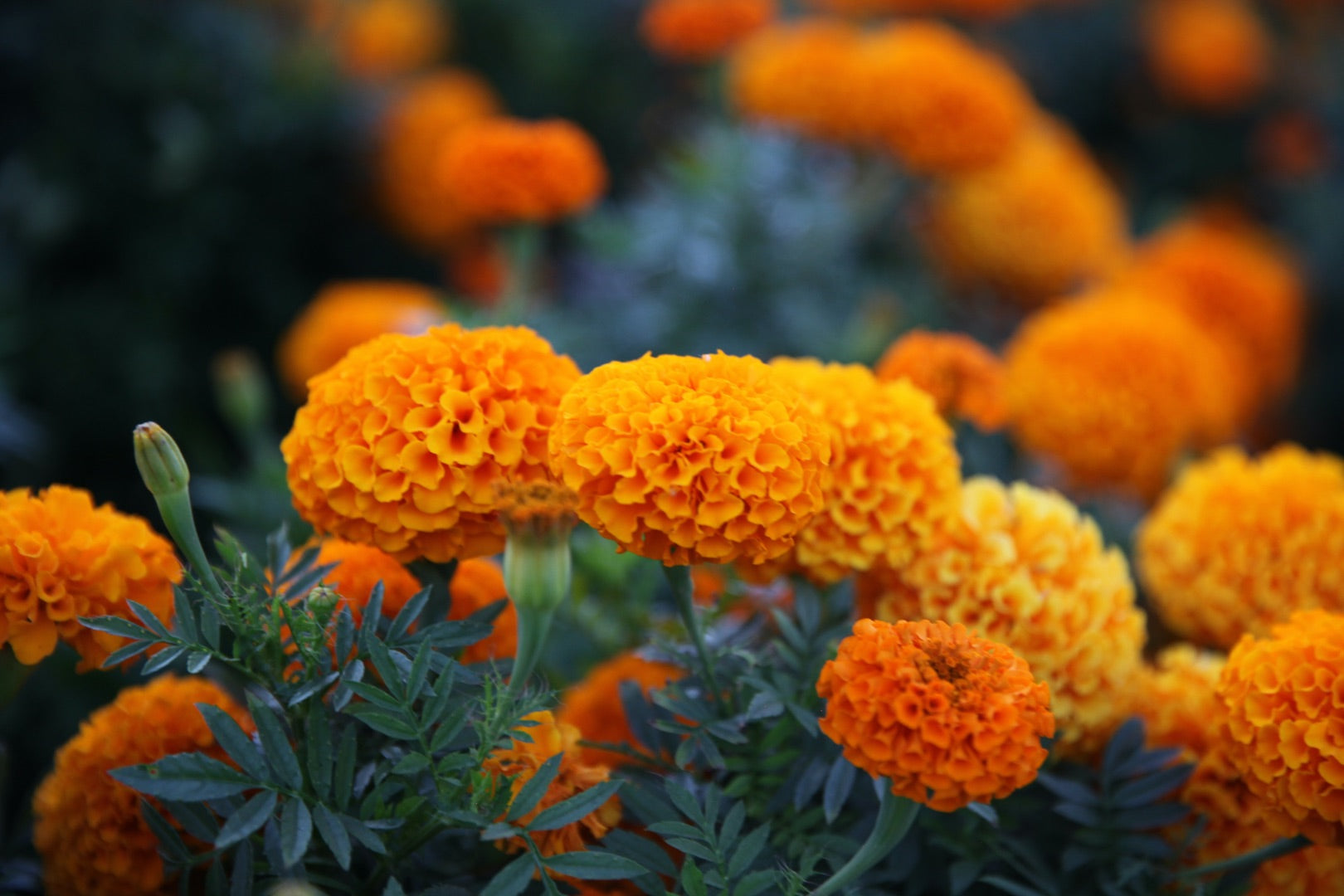Explore the main uses of marigolds and their benefits, from relieving inflammation to being a natural bug-repellent to helping ease skin wounds and cramps.

Marigolds (with the botanical name Tagetes) are undeniably beautiful flowers. They are one of the most magical and transformative flowers you can grow in your garden and even indoors as potted plants. Marigolds have been used for their medicinal properties for centuries. They are known to have anti-inflammatory and antiseptic effects, making them a popular choice for natural remedies. Marigold extracts are commonly used in ointments, creams, and salves to treat skin irritations, wounds, and acne. In addition, marigold tea is believed to have healing properties for digestive issues, such as ulcers, gastritis, and constipation. The flower is also rich in antioxidants, which can help prevent cell damage and slow down aging. Overall, marigolds are a powerful natural remedy that can be easily incorporated into your daily routine.
In this blog, we will explore some of the miraculous power and health benefits of marigolds in different situations, both inside and outside the home, to learn how to use marigolds to make your life happier, healthier, and more peaceful than ever before.
Folklores and Beliefs Associated with Marigolds
Some people use marigolds in wedding garlands and consider them a love charm. Marigolds are revered as a national symbol in Ukraine. Since pre-Hispanic times, marigolds have been utilized in Mexico's Day of the Dead celebrations.
In India, Nepal, and Thailand, marigolds are also commonly grown and utilized as garlands and decorations for religious ceremonies and celebrations. The ancient Welsh employed marigolds as a weather indicator; severe weather was expected if the flower was closed.
Blooming marigolds promote happier situations, and selecting or spending a lot of time gazing at marigolds has been known to cause intoxication. It is also said that if a couple is having difficulties, they should preserve a marigold plant in a pot. Additionally, warts have been documented to be removed with marigold leaves.
Calendula Marigolds

Calendula marigolds are yellow-orange in coloration, with little florets of petals that are gathered and dried for their medicinal and therapeutic benefits. Although several species of marigold flowers are grown worldwide, calendula is regarded as the most medicinal and beneficial. Though it originated in Egypt and some regions of the Mediterranean, it is now grown on every continent and often blooms in the summer (around May and October in the Northern Hemisphere).
Uses for Marigolds
Marigolds have a variety of uses because of their antioxidant properties, such as:
1. Immune-boosting medication
To treat cough, sore throat, and fever symptoms, marigold (calendula) drops or extract can be used.
2. Digestive and soothing tea
Tea can be brewed with marigold flowers to alleviate colitis symptoms and inflammatory bowel illnesses. In addition to easing menstrual or stomach pains, marigold tea helps treat gastritis, acid reflux, and ulcers.
3. Skincare procedures at home
In addition to treating wounds, dry skin, blisters, and ulcerations, ointment obtained from marigolds can relieve sunburns, warts, bites, and acne.
4. Treatment for skin, eye, or genital infections
For centuries, marigold salves have been used to treat genital, foot, eye, mouth, and skin fungal infections, hemorrhoids, anal tears, and candida.
Benefits of Marigolds

Marigolds are the bright, cheerful flowers that you see all around during the summer. But marigolds have many benefits beyond their beauty that people don't always know about. Some of these benefits include:
1. Relieves conjunctivitis and eye inflammation
Calendula extract is effective in treating conjunctivitis and other chronic inflammatory eye diseases in animal studies. These extracts have been shown to have antibacterial, antiviral, antifungal, and immune-stimulating characteristics that not only lessen eye infections but also safeguard vision by protecting fragile eye tissues from UV light, deterioration/aging, and oxidative damage.
2. Reduces inflammation and damage from free radicals
Calendula has been shown through research to be a naturally occurring cytotoxic, hepatoprotective, and spasmogenic plant. This has been proven in both animal and human tests. The flower extracts have been found to reduce C-reactive protein and cytokine levels and shield cells from free radical damage, one of the main reasons for aging and cell decline.
Calendula protects against infections of the skin, GI tract, and genitals brought on by viruses or bacteria, in addition to controlling oxidative damage from free radicals that can impact delicate tissues, such as those of the eyes.
Additionally, studies demonstrate that calendula marigold can lessen the side effects of chemotherapy and cancer therapies as well as prevent the formation of bacteria in wounds.
3. Contains natural antiseptic properties
One well-researched treatment is applying marigold extract drops to the interior of the ear canal to cure bacterial ear infections and lessen pain. Calendula drops have been shown to reduce inner-ear swelling and inflammation within a few short days of administration, sometimes even without the use of antibiotics. Calendula also has antifungal properties that make it helpful in treating jock itch, vaginitis, and vaginal infections.
4. Naturally drives away bugs
Marigolds can be used as a natural insect repellent because of their pungent smell, antioxidant content, and volatile oils. For this reason, marigold flowers are frequently grown in vegetable gardens and used as an extract in candles, bug repellent, and various skin treatments to fend against mosquito bites.
5. Heals burns, rashes, and skin wounds
Calendula has been discovered to have the ability to stimulate the formation of healthy new tissue, improve the production of collagen, which firms and strengthens skin, hydrate dry skin, and hasten the process of skin restoration after surgery or damage.
The presence of glycoproteins and nucleoproteins in marigolds is believed to stimulate the creation of epithelial cells, which, in turn, helps to heal wounds. Additionally, it has been associated with better collagen metabolism stimulation and higher cell turnover.
6. Reduces cramps and spasms
Calendula's antispasmodic properties are useful for easing menstrual cramps, "charley horse" pain, stomach cramps, and muscle spasms. Marigolds can lessen cramping by increasing circulation flow to the affected area and reducing inflammatory reactions.
The florets can be applied to the abdomen as an ointment or extract to absorb into tense muscles through the skin, or they can be drunk as a tea to aid in digestion and enhance liver function.
A Universal Medicinal Flower
The marigold flower is a wonderful creation of nature. It is a medicinal flower that is dried, condensed, and made into ointments, teas, and drops for both internal and exterior use. The summertime and marigolds are like a match made in heaven. They are bright and cheery, with the potential for so much more.



